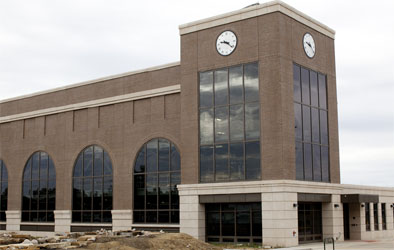How Facebook Saves Data Center Energy
Seeking to transform the energy efficiency of global data centers, the online social network Facebook has launched the Open Compute Project, an initiative to share the custom-engineered technology in its first dedicated data center in Prineville, Oregon.
This technology, according to Facebook, delivered a 38 percent increase in energy efficiency at 24 percent lower cost for Facebook. The specifications and best practices behind those gains will now be available to companies across the industry.
“Facebook and our development partners have invested tens of millions of dollars over the past two years to build upon industry specifications to create the most efficient computing infrastructure possible,” said Jonathan Heiliger, vice president of technical operations at Facebook.
“These advancements are good for Facebook, but we think they could benefit all companies. Today we’re launching the Open Compute Project, a user-led forum, to share our designs and collaborate with anyone interested in highly efficient server and data center designs. We think it’s time to demystify the biggest capital expense of an online business — the infrastructure.”
[ Also Read: Why Did Facebook Raise $1.5 Billion? ]Inspired by the success of open source software, Facebook is publishing technical specifications and mechanical CAD files for the Prineville data center’s servers, power supplies, server racks, battery backup systems and building design.
This technology enabled the data center to achieve an initial power usage effectiveness (PUE) ratio of 1.07, compared with 1.5 for existing facilities, which fall into the “best practice” category as defined by the U.S. Environmental Protection Agency.
[ Also Read: When a Facebook Friend Gives Gift of Life ]Established by the Green Grid in 2007, PUE is an indicator of data center energy efficiency, and the lower the number, the better.
Facebook is releasing these designs as open hardware, aiming to encourage industry-wide collaboration around best practices for data center and server technology.
[ Also Read: Will You Join Goby’s Facebook Group? ]Advanced Micro Devices, Dell, HP and Intel are among the companies that co-developed technology with Facebook. In addition, Dell’s Data Center Solutions business will design and build servers based on the Open Compute Project specification.
Synnex Corporation will also serve as a vendor for Open Compute Project servers, offering fully integrated and tested solutions based on customers’ specifications.
[ Also Read: What is a Net-Zero Energy Bank Location? ]For Facebook’s data center in Prineville, Open Compute Project hardware delivered:
Energy savings—The data center uses 38 percent less energy to do the same work as Facebook’s exiting facilities. If a quarter of the data center capacity in the U.S. were built on Open Compute Project specifications, it would save enough energy to power more than 160,000 homes.
Cost savings—In addition to the energy savings, Open Compute Project hardware means data center infrastructure costs 24 percent less to build out than Facebook’s existing data centers.
Materials savings—Servers use a vanity-free design with no paint, logos, stickers, or front panel – and are free of all non-essential parts. This saves more than 6 pounds of materials per server. In a typical data center, this would save more than 120 tons of material from being manufactured, transported, and, ultimately, discarded.
Facebook is publishing specifications and mechanical designs for Open Compute Project hardware, including motherboards, power supply, server chassis, and server and battery cabinets.
In addition, Facebook is making available its data center electrical and mechanical construction specifications.
It was announced Thursday, April 7.
More information about the project, specifications and CAD files are available at http://opencompute.org/
Facebook Engineering page is at http://www.facebook.com/Engineering
Photo courtesy: Facebook
💛 Support Independent Journalism
If you find RMN News useful, please consider supporting us.




